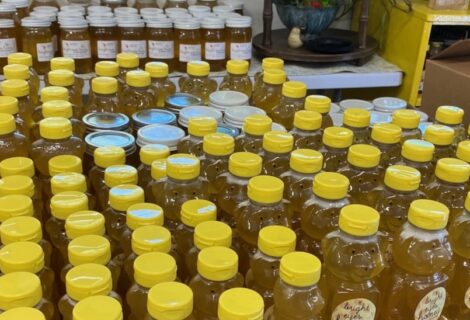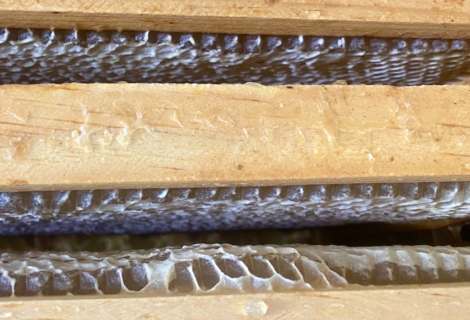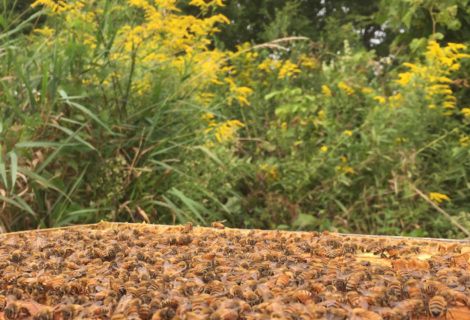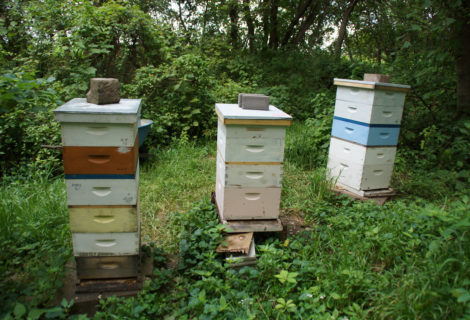Honey Harvest part 1 – Bee escapes
We forgot to bring a step stool and the heavy boxes meant that sometimes two were lifting together, and sometimes one was prying and another was lifting.
This is what we like to see though – lots of comb and bees visible from the top.

Hive A is the largest one with a configuration of 3 mediums, queen excluder, and then 5 medium supers. What we found though was that the top box, added only 3 weeks prior, had only just the beginnings of wax on the plastic foundation. And the box below it was full, but uncapped. I did not have any spare boxes with already drawn comb, and I was worried that the number of bees in this quite strong colony would be hard pressed fitting into the bottom 3 supers, so we took the top super and added it just below the bee escape. You can see it as the the darker brown box in the photo below.
Had I took a little more time to consider, I would have moved the second box down there with the uncapped honey frames. They turned out to be just shy of being dried down enough and we didn’t end up spinning most of them. So that would have been perfect for the colony to hold onto and cap off later in the season. Oh well, you live and learn.
The other thing we are doing here is rotating some of the boxes around to keep the burr comb between the boxes from coming back together in the same configuration and then just continuing to drip honey when we removed them the next day. By rotating every other box, or by placing them on the stack in a different order, the bees will spend the next day fixing the broken comb and cleaning up the drips.
The one thing we forgot to do here though was number the boxes before rearranging them. As we did not put them back in the same order, we later could not tell the original order of a box on the stack when spinning out the honey. We could only tell which hive it came from. Next year maybe we’ll number them as we add them.
I’m down to the queen excluder here, picking up a nice chunk of comb honey for samples.
It’s just a taste of the sweet things to come!
As you can see, there was some nice bearding going on one of the hives after doing our prep work.











Recent Comments